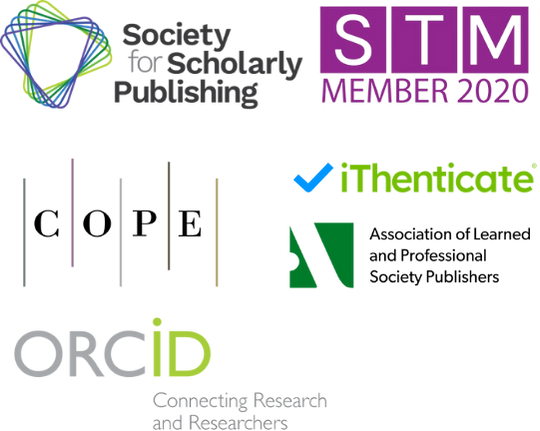The Role of Light Therapy in Mental Health and Depression
Keywords:
lighting science, psychological health, depression patient, light therapy, virtual realityAbstract
The relationship between lighting science and mental health is a multi-dimensional and cross-disciplinary field, and they are closely related to each other. The light's illumination, through factors such as intensity, color, and rhythm, can affect people's emotions, cognition and behaviors through psychological and physiological mechanisms. Therefore, the scientific utilization of light in the field of mental health is an inseparable part of the therapeutic process. However, in the actual treatment process, there are limitations in how to make use of more personalized and attractive cost-effective treatment methods to provide better care for patients. By taking into account the impact of different light sensations and colors on patients, light therapy is applied, combined with artificial and natural light therapy technologies, to offer patients diverse treatment options. At the same time, the integration of online tracking technology and appropriate virtual reality technology effectively retains patients' treatment data, allowing them to not only enjoy a better treatment experience but also achieve better therapeutic outcomes during the treatment process. By saving costs while adopting more attractive and personalized theories and methods, better and more suitable treatment plans are formulated for patients with depression. Light therapy has expanded beyond merely promoting psychological well-being through functional specializations and now utilizes reasonable lighting strategies to better address the symptoms of depression for patients, serving as an important supplement to non-pharmacological approaches.
References
1. V. Leichtfried, W. Kantner-Rumplmair, C. Bartenbach, H. Guggenbichler, R. M. Gothe, and W. Schobersberger, "Bright light therapy: minimizing light induced side effects with an innovative light setup," Int. J. Psychiatry Clin. Pract., vol. 14, no. 4, pp. 309–312, 2010, doi: 10.3109/13651501.2010.486900.
2. D. Jonauskaite, I. Tremea, L. Bürki, C. N. Diouf, and C. Mohr, "To see or not to see: Importance of color perception to color therapy," Color Res. Appl., vol. 45, no. 3, pp. 450–464, 2020, doi: 10.1002/col.22490.
3. Y. Yaodong, Y. Zhang, G. Feng, Y. Lei, Q. Liu, and Y. Liu, "Light therapy for sleep disturbance comorbid depression in relation to neural circuits and interactive hormones—A systematic review," PLoS One, vol. 18, no. 9, p. e0286569, 2023, doi: 10.1371/journal.pone.0286569.
4. A. Kushkin, A. Giordano, A. Griffin, and A. Savelyev, "Cognitively congruent color palettes for mapping spatial emotional data. Matching colors to emotions," Cartogr. Perspect., no. 102, pp. 38–62, 2023, doi: 10.14714/CP102.1821.
5. I. Mylona and G. D. Floros, "Blue light blocking treatment for the treatment of bipolar disorder: Directions for research and practice," J. Clin. Med., vol. 11, no. 5, p. 1380, 2022, doi: 10.3390/jcm11051380.
6. A. M. Gagné, F. Lévesque, P. Gagné, and M. Hébert, "Impact of blue vs red light on retinal response of patients with seasonal affective disorder and healthy controls," Prog. Neuropsychopharmacol. Biol. Psychiatry, vol. 35, no. 1, pp. 227–231, 2011, doi: 10.1016/j.pnpbp.2010.11.009.
7. R. Tomassoni, G. Galetta, and E. Treglia, "Psychology of light: How light influences the health and psyche," Psychology, vol. 6, no. 10, pp. 1216–1222, 2015, doi: 10.4236/psych.2015.610119.
8. R. Pan, G. Zhang, F. Deng, W. Lin, and J. Pan, "Effects of red light on sleep and mood in healthy subjects and individuals with insomnia disorder," Front. Psychiatry, vol. 14, p. 1200350, 2023, doi: 10.3389/fpsyt.2023.1200350.
9. M. A. Oldham and D. A. Ciraulo, "Bright light therapy for depression: a review of its effects on chronobiology and the au-tonomic nervous system," Chronobiol. Int., vol. 31, no. 3, pp. 305–319, 2014, doi: 10.3109/07420528.2013.833935.
10. L. Tao, R. Jiang, K. Zhang, Z. Qian, P. Chen, Y. Lv, and Y. Yao, "Light therapy in non-seasonal depression: An update me-ta-analysis," Psychiatry Res., vol. 291, p. 113247, 2020, doi: 10.1016/j.psychres.2020.113247.
11. L. Lan, S. Hadji, L. Xia, and Z. Lian, "The effects of light illuminance and correlated color temperature on mood and crea-tivity," Build. Simul., vol. 14, pp. 463–475, Jun. 2021, doi: 10.1007/s12273-020-0652-z.
12. T. M. Penders, C. N. Stanciu, A. M. Schoemann, P. T. Ninan, R. Bloch, and S. A. Saeed, "Bright light therapy as augmentation of pharmacotherapy for treatment of depression: a systematic review and meta-analysis," Prim. Care Companion CNS Disord., vol. 18, no. 5, p. 26717, 2016, doi: 10.4088/PCC.15r01906.
13. K. J. Rohan, K. B. Burt, R. J. Norton, J. Perez, P. Iyiewuare, and J. M. Terman, "Change in seasonal beliefs mediates the durability advantage of cognitive-behavioral therapy over light therapy for winter depression," Behav. Ther., vol. 54, no. 4, pp. 682–695, 2023, doi: 10.1016/j.beth.2022.11.002.
14. M. Rossi, "A design‐oriented approach for managing colored light sources in lighting design software," Color Res. Appl., vol. 48, no. 1, pp. 32–39, 2023, doi: 10.1002/col.22823.
15. B. Plitnick, M. G. Figueiro, B. Wood, and M. S. Rea, "The effects of red and blue light on alertness and mood at night," Light. Res. Technol., vol. 42, no. 4, pp. 449–458, 2010, doi: 10.1177/1477153509360887.
16. E. Austin, A. N. Geisler, J. Nguyen, I. Kohli, I. Hamzavi, H. W. Lim, and J. Jagdeo, "Visible light. Part I: Properties and cu-taneous effects of visible light," J. Am. Acad. Dermatol., vol. 84, no. 5, pp. 1219–1231, 2021, doi: 10.1016/j.jaad.2021.02.048.
Downloads
Published
Issue
Section
License
Copyright (c) 2025 Rui Bai (Author)

This work is licensed under a Creative Commons Attribution 4.0 International License.


